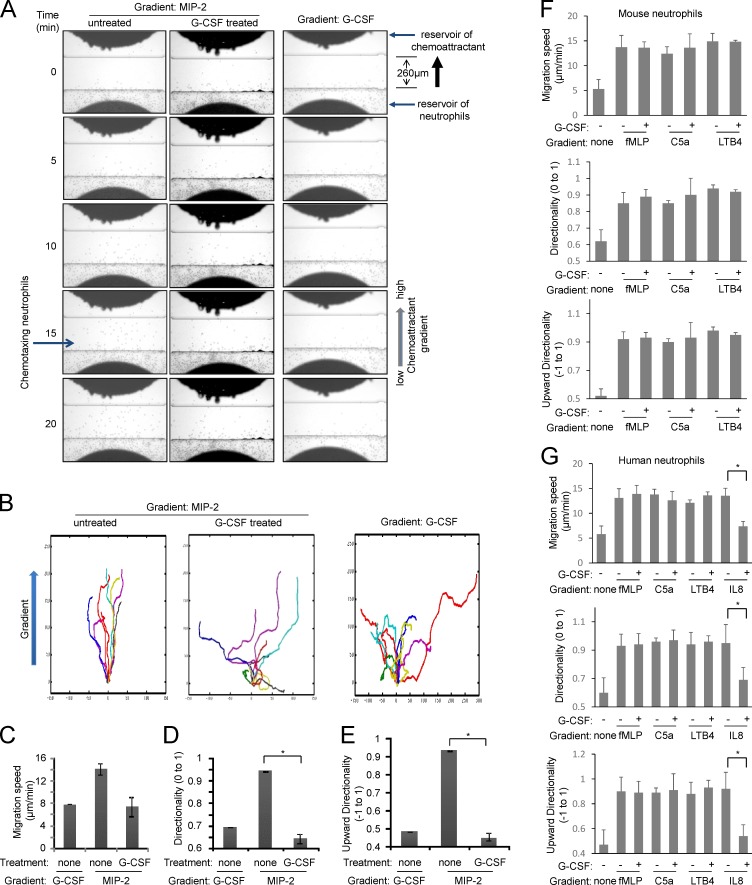Figure 5.
G-CSF inhibits MIP-2–induced neutrophil chemotaxis. (A) Chemotaxis of untreated or G-CSF–treated mouse neutrophils (also see Videos 5, 6, and 7). (B) Tracks of migrating neutrophils (cells that moved at least 65 µm from the bottom of the channel; n = 10) were traced from the captured images, realigned such that all cells started from the same starting point (0,0), and plotted. Chemoattractant concentration increases in the positive y direction. (C–E) Tracks of migrating neutrophils were analyzed to determine directionality, upward directionality, and migration speed. (F) G-CSF does not affect chemotaxis elicited by LTB4, C5a, and fMLP in mouse neutrophils (also see Videos 8 and 9). (G) G-CSF specifically suppresses MIP-2–mediated chemotaxis of human neutrophils. Data are represented as means ± SD of three experiments (n = 20 cells). *, P < 0.01 versus neutrophils not treated with G-CSF.

